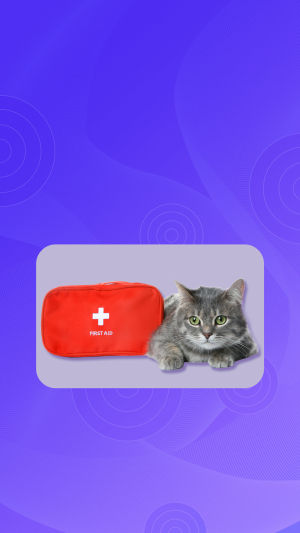One of the most common concerns of pet owners must be the health of their cats and dogs. Just as it is best to master some people's first aid knowledge in case of emergency, pet owners should also master some relevant knowledge of pet first aid, which can really save your pet’s life at a critical time.
1. Bleeding
Whether it is a kitten or a puppy, they are restless by nature. Whether it is outdoors or at home, there is a certain possibility of injury and bleeding. If you encounter external bleeding, the easiest way to deal with it is to directly apply pressure to the bleeding site to stop the bleeding.
Keep pressing for at least 10 minutes. If the bleeding cannot be completely stopped, you can use a hemostatic bandage to wrap the area about 5 cm above the bleeding site. See the veterinarian immediately after treatment.
2. Trauma
In addition to bleeding, most of the injuries suffered by pets are relatively minor traumas, but we must pay more attention, because the wounds are very susceptible to infection. Surface wounds also require compression hemostasis treatment, followed by cleaning and bandaging.
Deep wounds require cold compresses to the wound first, and compression hemostasis treatment at the same time. If there is contamination or debris in the wound, it is best to wash with plenty of normal salines or a balanced electrolyte solution and seek medical attention immediately after treatment.
3. Fractures
This may be another common pet injury, especially one that is prone to restless pets. If your pet accidentally breaks a bone, it will make a painful bark, so be sure not to touch it vigorously at this time. In the case of ensuring safety, put headgear on the pet first.
If there is bleeding, stop the bleeding without causing more damage, always pay attention to avoid shock symptoms, and immediately send it to the veterinary hospital.
4. Difficulty breathing
People choke sometimes when they eat, and so do pets, especially dogs who are in a hurry to eat.
Choking and suffocation, if not rescued in time, the probability of death is very high. If a dog chokes, it will shake its head and scratch its mouth with its forelegs. At this time, the owner must remain calm.
Follow these steps:
*Put the dog's head down and lift its hind legs like a lawnmower.
*When necessary, open the dog's mouth, and if you see a blockage, pull it out directly.
*Make fists with both hands, compress the abdomen forward and push forward until the blockage is spit out (Heimlich maneuver).
*Strength tap forward on the back of the scapula to apply force.
During the rescue process, urgently seek a pet hospital to avoid a more urgent situation.
5. Stop breathing
If the pet stops breathing, you can lay the pet on the right side in a flat place, touch the left chest, and carefully feel the pet's heartbeat. If there is still a heartbeat, but the breathing has stopped, artificial respiration should be performed as soon as possible.
Open your pet's mouth and blow directly into its nose (remember it’s the nose, not the mouth) until the ribcage is open, repeating 12 to 15 times per minute.
6. Poisoning
If the pet loses consciousness by eating poisonous items by mistake, you can only go to the veterinarian as soon as possible, and carry the suspicious poison and its packaging with you, so that the pet doctor can find out the poison and prescribe the right medicine.
7. Shock
During shock, animals often have abnormal breathing and dilated pupils. For example, in hemorrhagic shock, the bleeding can be stopped first. If there are no obvious symptoms, the pet's body can be flattened first, and emergency measures can be taken before emergency medical treatment.





